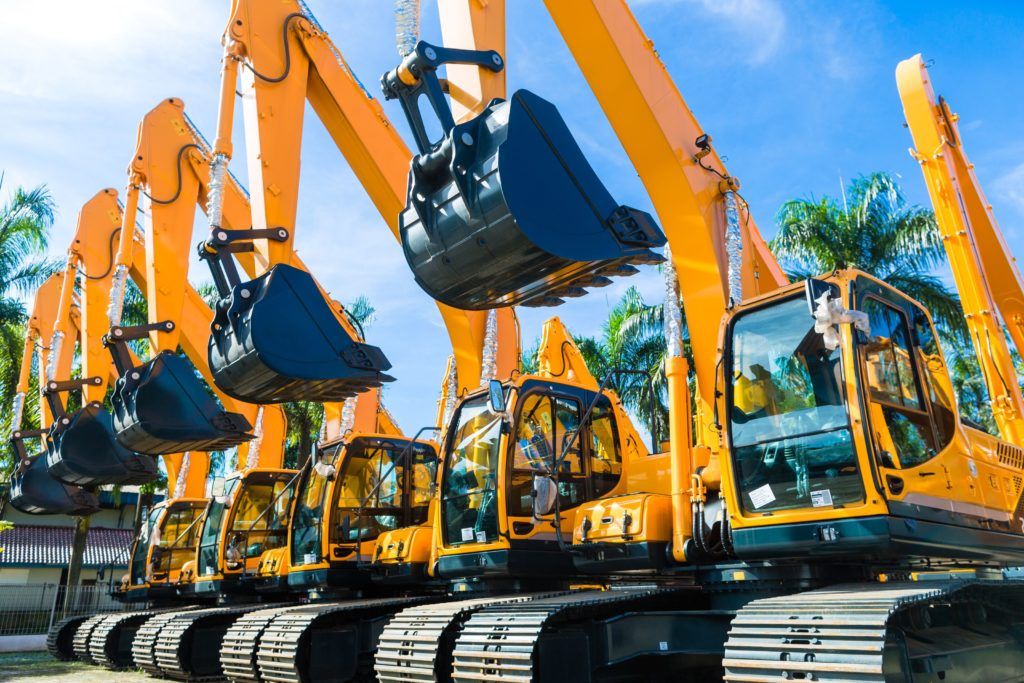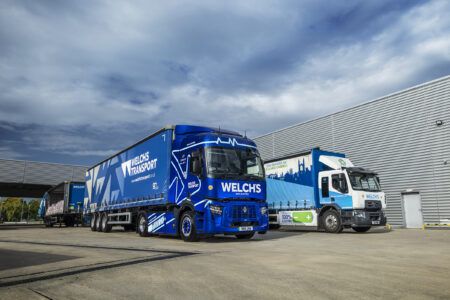 Dr. Fabiana Cavalcante, global head of e-mobility traction for ABB, a specialist in components and solutions for electrification and automation, looks at the challenges and potential benefits that will derived from the electrification of industrial, off-highway vehicles.
Dr. Fabiana Cavalcante, global head of e-mobility traction for ABB, a specialist in components and solutions for electrification and automation, looks at the challenges and potential benefits that will derived from the electrification of industrial, off-highway vehicles.
Increased volatility in fuel prices and the need to prioritize decarbonization to meet sustainability goals are significant challenges facing manufacturers and operators of industrial vehicles in mining, construction, goods handling and other segments. These challenges and others, such as reducing operating costs, are driving the urgent need to transition vehicles from internal combustion engines that burn fossil fuels to cleaner electric power.
Totaling around 30% of global emissions, transporting people, goods, and raw materials is extremely carbon-intensive. Furthermore, this transportation accounts for 25% of total global energy consumption. Although there is some movement towards alternative fuels such as hydrogen, many of the world’s industrial vehicles are still diesel-powered, a fuel that releases carbon dioxide (CO₂), sulfur oxides (SOx), and other harmful gases when used in traditional internal combustion engines. These emissions can be significantly reduced or omitted altogether, thanks to proven technology, products and readily available expertise.
Vehicles used in common industries are a particular area of focus. Estimations are that diesel-powered construction vehicles, such as excavators, cranes, and dozers, collectively emit around 400 megatonnes (Mt) of CO2 per year. That is about 1.1% of global CO2 emissions. Of these construction vehicles, larger excavators over 10 tonnes in weight are responsible for a staggering 46% of those emissions.
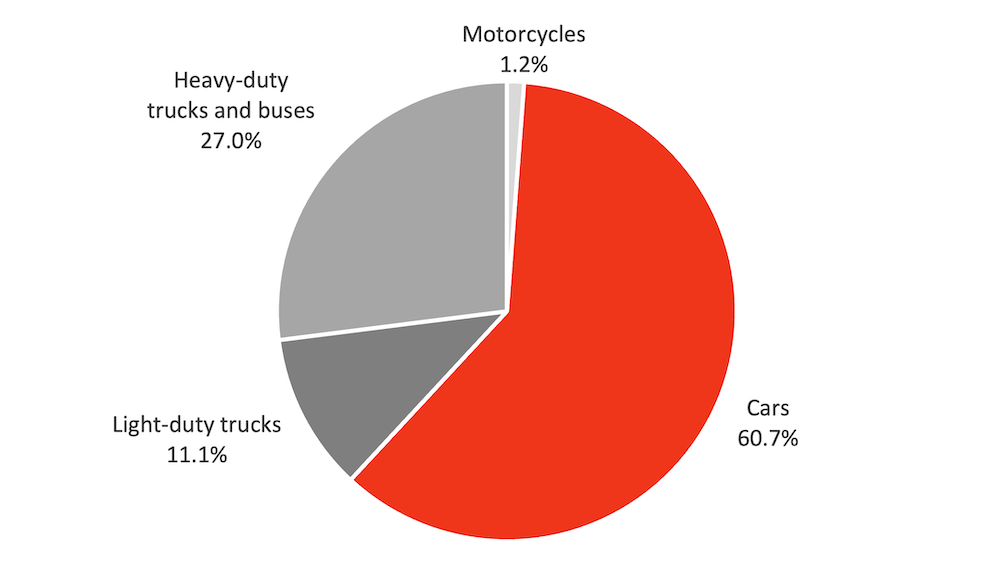
Furthermore, vehicles that operate underground, such as those in mining, typically work in tight and enclosed spaces where a build-up of exhaust gases can quickly lead to hazardous situations for workers. That means underground mines require extensive ventilation systems to extract diesel exhaust fumes to make the air safe and breathable. These ventilation systems are electrically powered, so they add to the overall energy consumption and operating cost of the mine.
Building effective partnerships
Operators need to expand their fleet of electric or semi-electric vehicles as swiftly and efficiently as possible. This will likely raise important questions about the right strategy to take. They will also need to decide on the best partners to work with. While these processes may be less straightforward, such an enormous task will always present challenges.
To begin, operators can take an overview of their processes to identify their specific vehicle use cases. In doing so, they can identify which vehicles best match which alternative power source – be it electric powertrains, hydrogen, or fuel cells. The right concept for fossil-free vehicle operations also requires understanding key aspects such as daily operating time, drive cycles (including energy recovery), peak torque demand, and charging opportunities.
By partnering with OEMs specialized in products, subsystems, and systems, operators can speed up the process of vehicle electrification. An example is Nasta AS, one of Norway’s largest excavator suppliers. The company redesigns and rebuilds construction machinery and recently worked with ABB to convert diesel vehicles to run either on battery power or through a direct cable connection.

The conversion involves retrofitting the vehicles with electric powertrains – namely electric motors and drives. An energy storage system and charging system are also added.
Nasta AS has received considerable praise for the performances of its excavators. The process manages to remove around 48 tons of CO2 a year from the environment and reduce overall noise pollution in urban settings
In the push for decarbonization of the global economy, stakeholders will search for a means of power that maximizes both energy efficiency and vehicle productivity – diesel engines underperform on both these measures compared to electric alternatives. A diesel engine will only run at a maximum of 45% energy efficiency, whereas electric motors can achieve at least 95% efficiency. This is a clear path towards greater efficiency that can be actioned right now.
Operating in demanding conditions
Due to the environments where industrial vehicles operate, electric powertrains need to be robust, more powerful, and have a longer working life than the smaller motors used in passenger cars. Typically, the powertrains are moving vehicles of 10 tonnes or more in weight and operate continuously over long working hours. This means they must be able to deliver high torque and perform efficiently at a wide range of loads. In addition, they must be designed to withstand all kinds of weather, a wide range of ambient temperatures, extreme working conditions, and shocks and vibrations. They are also expected to have a long and productive working life.
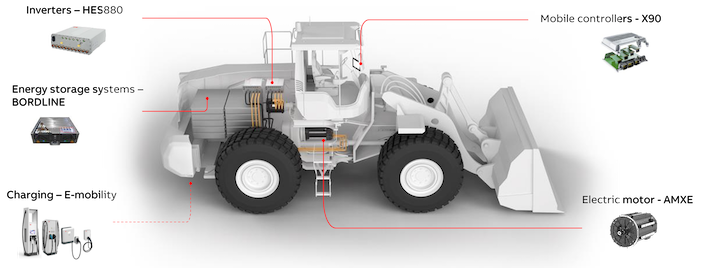
Fortunately, these heavy-duty motors have long been used in rail transport, so the technology is mature and proven. That means industrial vehicles can also make effective use of them. For example, ABB’s AMXE® motors are compact, permanent magnet synchronous motors for high efficiency propulsion and auxiliary usage, allowing configuration with specific lengths, windings and voltages to achieve the required performance.
A traction inverter, such as ABB’s HES880, converts the electrical supply from the power source into a variable voltage and variable frequency output to match the needs of the vehicle. Because this process affects all other components in the powertrain, it is important to choose a traction converter which operates efficiently.
In addition to the emissions from a traditional combustion engine, another major downside is that the energy expended during braking is automatically lost as heat. However, traction converters and electric motors can recapture this energy and deliver it back into the battery. For example, ABB’s BORDLINE® ESS batteries are based on LTO technology, guaranteeing high safety, rapid charging, and long lifetime. If catenaries power the vehicle, it can be returned to the network. This regenerative braking system (RBS) is already prevalent in road and rail vehicles. Now, the industrial sector is starting to adopt this technology more and more due to the multiple benefits it offers.
Infrastructure Requirements
Electrified vehicles require high-quality charging infrastructure to realize their full potential. This could take a variety of forms, including onboard power supplies or catenaries. It is vital to ensure the proper infrastructure is in place before the electrification process begins. This process will usually involve collaboration between operators, OEMs, and infrastructure and energy providers on a long-term basis.
An example of this is in Zurich, Switzerland. VBZ, the public transport operator, collaborated with ABB on powertrain technologies to replace their existing diesel-powered buses. The buses are powered through a combination of overhead catenaries and onboard batteries. The batteries are recharged on sections of the route where there are catenaries, so that the buses are then fully battery-powered on the sections without catenaries. This hybrid charging model gives flexibility to transport companies and enables them to expand their network more easily as cities expand and urban populations grow.
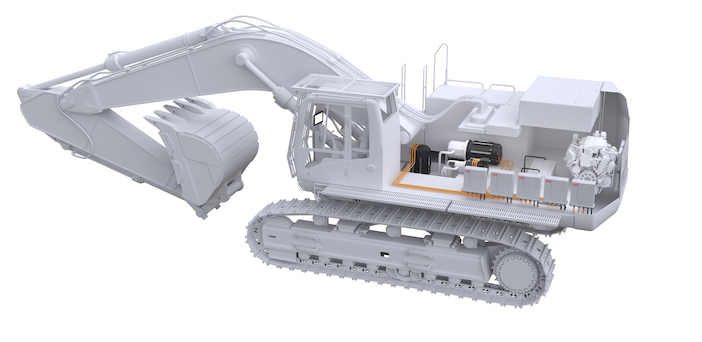
Full electrification may not be possible in some cases, such as limited catenary network availability or too large battery requirements. However, hybrid-diesel electric power allows savings to be still made – the engine can operate with greater efficiency within its optimum load range. Hybrid technology has already seen widespread use in the marine sectors, as well as in larger dump trucks.
Global emissions targets will become increasingly strict across all industries. That means electrification of industrial vehicles can play a vital role in full decarbonization and achieving Net Zero. ABB has the right products and systems to help OEMs and operators reach their decarbonization targets.
This feature was provided by ABB, to find out more visit ABB Sustainable Transport


